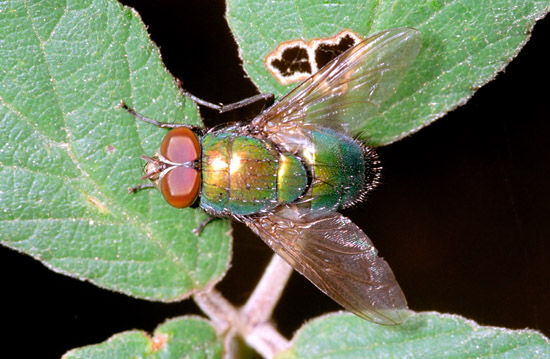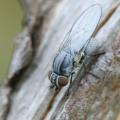Diptera.info :: Identification queries :: Diptera (adults)
Who is here? 1 guest(s)
|
Calliphoridae?
|
|
| digitalg |
Posted on 02-08-2006 12:38
|
|
Member Location: Portugal Posts: 51 Joined: 31.07.06 |
Hello, I've been looking around this forum for quite sometime and I decided to step in. Let me tell you that this looks like a great group and with lots of knowledge! I've been building a website of bugs from Portugal, now with more than 300 portrayed species (you're all invited to take a look - bugs.digitalg.net - sorry for the publicity) and I've also a diptera section. Unfortunately the diptera order is probably the most disordered one in the site and I'll be around asking for your help once in a while. Some of this photos were taken sometime ago, I didn't know what to look for and it might not be possible to pinpoint everything, but I'm quite happy if i can give every bug a family!  But some family members really get me confused ... like tachinidae, calliphoridae and muscidae. I know I should be looking for hypopleural bristles and post-scutellum but most of the time I find it hard to get those details into the photo. Enough chat ... these were taken in 2004, the 27th of September in the vegetation bordering a dirt road near crop fields and a pinetree forest. The fly would be about 12mm long. Calliphoridae? Thank you, Armando digitalg attached the following image:  [68.1Kb] Edited by digitalg on 02-08-2006 12:46 |
| digitalg |
Posted on 02-08-2006 12:41
|
|
Member Location: Portugal Posts: 51 Joined: 31.07.06 |
Another of the same fly ...
digitalg attached the following image:  [82.93Kb] |
| Tony Irwin |
Posted on 02-08-2006 13:13
|
|
Member Location: Norwich, England Posts: 7273 Joined: 19.11.04 |
Hi Armando Welcome to the forum!  This is a specimen of Lucilia (Calliphoridae). There are Muscidae that look like this but they have a more gentle (or no) bend in the long vein near the wing tip, or shorter bristles on the abdomen. One of the Tachinidae (Gymnochaeta) is also a metallic green fly, but has much longer and stronger bristles on the abdomen, so I think this is Calliphoridae. Lucilia are typically this bright green colour. Other metallic calliphorids are usually darker or more blue. The eyes nearly meet, so it's a male. As for the species, that's more difficult. Separation is possible using characters seldom seen on a photo, and to be really certain, dissecting the genitalia is often necessary. Edited by Tony Irwin on 02-08-2006 13:16 Tony ---------- Tony Irwin |
|
|
|
| digitalg |
Posted on 02-08-2006 23:13
|
|
Member Location: Portugal Posts: 51 Joined: 31.07.06 |
Thank you Tony, For what you say I think I have other Calliphoridae to ID, and probably one of those tachinids too. I'll be posting them. This detail you mention about the eyes meeting meaning this is a male. Is this valid to Lucilia, to all Calliphoridae or even more? I have a couple of shots of Volucella (Syrphidae), probably V. zonaria that differ mainly on the eye distance and I was thinking them differente species when they might just be male and female. I'm learning  Sorry if these are too much of a beginner questions. Edited by digitalg on 02-08-2006 23:16 Armando Frazão http://bugs.digit... |
| Nikita Vikhrev |
Posted on 02-08-2006 23:31
|
|
Member Location: Moscow, Russia Posts: 9410 Joined: 24.05.05 |
Hi Armando. In some families (Calliphoridae and Syrphidae, for example), "eyes touch/not touch" works. In others it doesn't work. In Sepsidae male has "weapons" = strong setas or spines on fore legs. In Tephritidae females have long and conical end of abdomen to put eggs inside plants. Other families - other ways to distinguish sexes. Nikita Nikita Vikhrev - Zool Museum of Moscow University |
|
|
|
| Tony Irwin |
Posted on 02-08-2006 23:48
|
|
Member Location: Norwich, England Posts: 7273 Joined: 19.11.04 |
The holoptic (nearly touching) eye character is found in the males of many families of flies. With very few exceptions (and I can't think of any right now) male eyes are closer together than females where there is a difference. In many genera or families there is no difference. In most syrphids the males have eyes that almost touch (like your Volucella), but that is not the case for Helophilus, Parhelophilus, Anasimyia, Lejogaster, Neoascia and several other genera. So the general rule is that if the eyes nearly touch, it's a male - if not, it could be either male or female.... except in those families where the eyes nearly touch in both sexes.... except in those families where the eyes nearly touch in both sexes....  . I'm thinking of the Pipunculidae where the females eyes are very close (though the males are even closer and usually touch), and several of the nematoceran families (the long-legged midges and gnats). It is a good idea to get to know what the abdomens look like in males and females. Soon you'll get to know the difference - it's only taken me 40 years! . I'm thinking of the Pipunculidae where the females eyes are very close (though the males are even closer and usually touch), and several of the nematoceran families (the long-legged midges and gnats). It is a good idea to get to know what the abdomens look like in males and females. Soon you'll get to know the difference - it's only taken me 40 years! 
Tony ---------- Tony Irwin |
|
|
|
| digitalg |
Posted on 03-08-2006 00:23
|
|
Member Location: Portugal Posts: 51 Joined: 31.07.06 |
Tony Irwin wrote: Soon you'll get to know the difference - it's only taken me 40 years!  Oh boy! great!  I've just received some feedback on someother bugs of my website ... and now this little lesson on flies ... As I've just said 5 minutes ago to some other bug hunter. I'm begining to think there's to much to learn to keep on with a project like this! But I'm not quiting just yet  Thank you both Armando Frazão http://bugs.digit... |
| Jump to Forum: |













